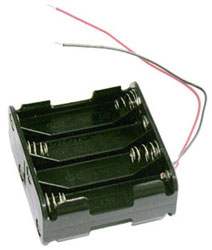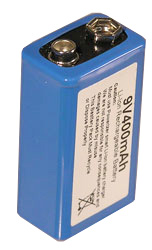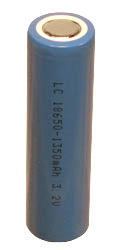lagoausente
Well-known member
I want to supply the Supergreen/9098 with batteries.
I know that internal Z of batteries is an issue, I will have to check, but is not the only issue, I think, there are more problems like space, price, charging method..
It´s suppose the preamp comsumption is around 40 ma/channel. I have two channels, but will use most times only one.
I have been considering all types and options. I resume my conclusions.
To get a good performance of the preamp, and since consumption seems not high, I think on suppling something between +/-15V and +/-20V.
NIMH: The problem on this type of battery,is that I would need a lot of batteries to get a voltage , let´s say +-18V would need 30 batteries. To get +-12V woud need 20 batteries. In any case I think I´ll have not space enough inside the preamp case. Aditionally, I´m not sure about if this holders allow a proper way to conect the pack, and I¨m not sure how about the internal Z of a pack like that:

Li-ion, are unsufe, and expensive, and specially to get those voltages.
Although I have found this Li-ion 9V batteries, 400 mah. They come with an integreated protection IC. Seem atractive, low space (4x9V= +-18V).
Cost 8$ each, so the cost would be 32$, near the same than with a NIMH package. http://www.batteryspace.com/index.asp?PageAction=VIEWPROD&ProdID=2644
That bad thing here, is that I would need to charge (I think), each battery separately, and life time would be around 10 hours in theory.

And finally LIfePO4:
They are 3.2 volt, so I would need 2x5 to get +/-16V.
The problem is the cost.
The advantages, they don´t explode and non fire, 10 units probably could fit in the preamp box, and the last advantage is that could charge the hole 32volt at one time, with a LI-ion charger+LIfePO4 cable adapter.
The problem again the cost, that charger cost 32$.
This LifePO4 batteries have between 1100 and 1600mah and cost around 6$ and 7$ each unit.
I would like to know your opinions, suggestions, and technical considerations.

I know that internal Z of batteries is an issue, I will have to check, but is not the only issue, I think, there are more problems like space, price, charging method..
It´s suppose the preamp comsumption is around 40 ma/channel. I have two channels, but will use most times only one.
I have been considering all types and options. I resume my conclusions.
To get a good performance of the preamp, and since consumption seems not high, I think on suppling something between +/-15V and +/-20V.
NIMH: The problem on this type of battery,is that I would need a lot of batteries to get a voltage , let´s say +-18V would need 30 batteries. To get +-12V woud need 20 batteries. In any case I think I´ll have not space enough inside the preamp case. Aditionally, I´m not sure about if this holders allow a proper way to conect the pack, and I¨m not sure how about the internal Z of a pack like that:

Li-ion, are unsufe, and expensive, and specially to get those voltages.
Although I have found this Li-ion 9V batteries, 400 mah. They come with an integreated protection IC. Seem atractive, low space (4x9V= +-18V).
Cost 8$ each, so the cost would be 32$, near the same than with a NIMH package. http://www.batteryspace.com/index.asp?PageAction=VIEWPROD&ProdID=2644
That bad thing here, is that I would need to charge (I think), each battery separately, and life time would be around 10 hours in theory.

And finally LIfePO4:
They are 3.2 volt, so I would need 2x5 to get +/-16V.
The problem is the cost.
The advantages, they don´t explode and non fire, 10 units probably could fit in the preamp box, and the last advantage is that could charge the hole 32volt at one time, with a LI-ion charger+LIfePO4 cable adapter.
The problem again the cost, that charger cost 32$.
This LifePO4 batteries have between 1100 and 1600mah and cost around 6$ and 7$ each unit.
I would like to know your opinions, suggestions, and technical considerations.










![Soldering Iron Kit, 120W LED Digital Advanced Solder Iron Soldering Gun kit, 110V Welding Tools, Smart Temperature Control [356℉-932℉], Extra 5pcs Tips, Auto Sleep, Temp Calibration, Orange](https://m.media-amazon.com/images/I/51sFKu9SdeL._SL500_.jpg)























